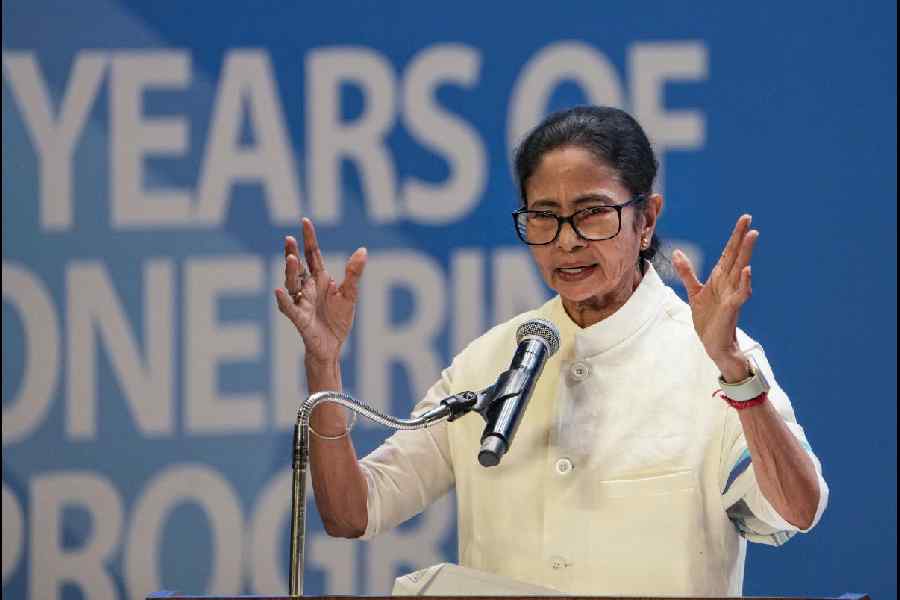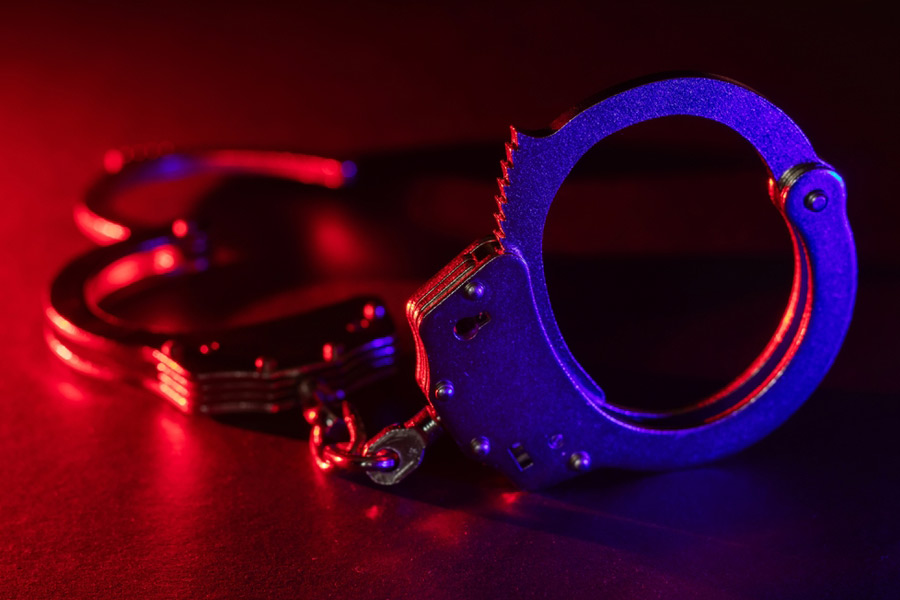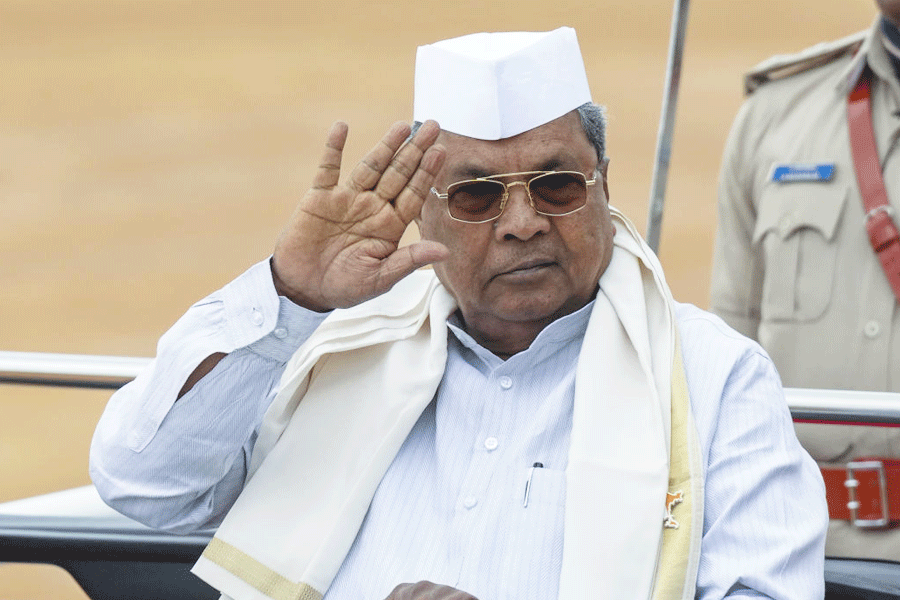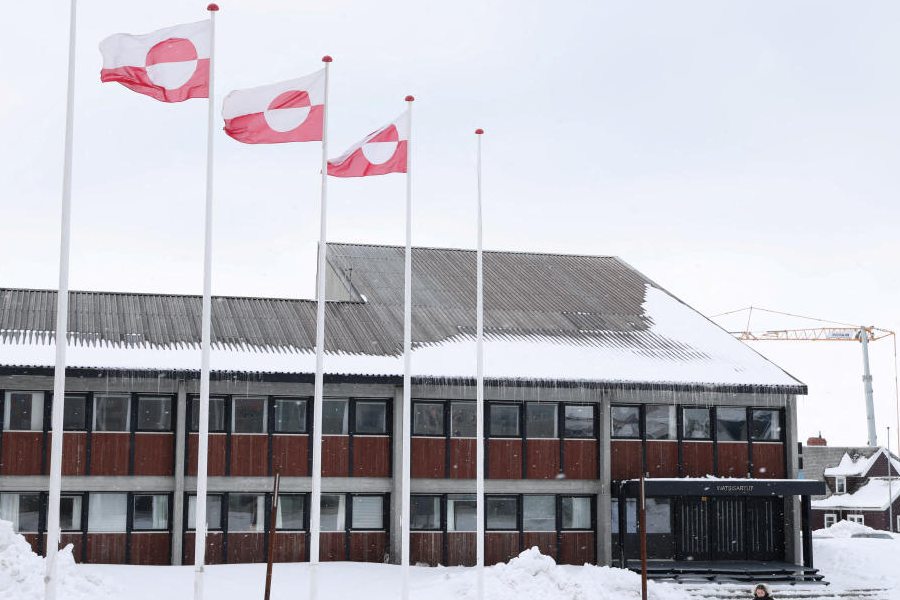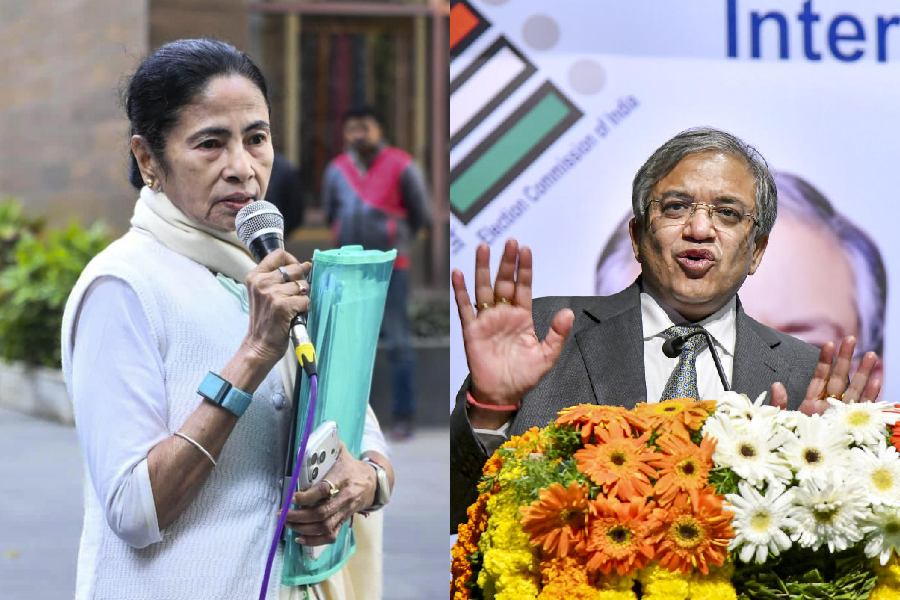The spiralling price of fuel has scalded many. Most among these people were anyway in distress because of how the pandemic had hit their income. The rising cost at home and outside has made an already stressful time even worse. Metro travelled across the city to find out how some of the people were coping with the change.
Here’s a list of five
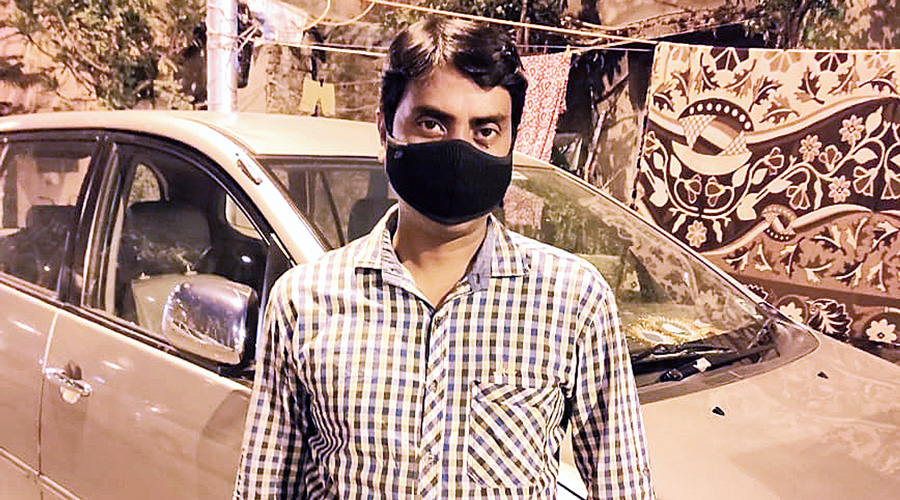
Sandip Kayal. Telegraph picture
Sandip Kayal, 43
Owner of a car rental business with a couple of Swift Dzires and a Toyota Innova
⚫ Monthly diesel expense on one car in 2018 for a contract of 3,000km — Rs 13,000 (approx.)
⚫ Monthly diesel expense on the same car in 2021 for a similar contract — Rs 17,000 (approx.)
A client who used to pay Kayal Rs 37,000 per month for the 3,000km-contract in 2018, now pays him Rs 40,000. But the rise in Kayal’s expenses has far surpassed the rise in payment. “The salary of drivers and maintenance cost, together with the exponential rise in fuel price, has been hurting me badly,” said Kayal.
His son, a Class XI student and a NEET aspirant, wanted to enrol in a two-year preparatory course with a leading coaching centre chain. “My son had cleared the entrance test but the course fee of Rs 2.5 lakh was too much for me. I did not enrol my son there,” said Kayal, a Kestopur resident.
Anjali Sardar, in her 40s
Domestic worker
⚫ Monthly expense on one domestic LPG cylinder in 2018 — Rs 500 (approx.)
⚫ Monthly expense on one domestic LPG cylinder in 2021 — Rs 850 (approx.)
Sardar, who lives in the Chinamandir area, lost her husband in a road accident a little over a month ago. Her husband was a rickshaw puller. Before the pandemic, she used to earn around Rs 8,000 per month by working — cooking and doing other domestic chores — at a string of apartment blocks off the EM Bypass.
But post-lockdown, the number of employers has come down drastically. “I earn around Rs 4,500 per month now,” said Sardar.
The nearly 70 per cent rise in the price of cooking gas has forced Sardar to make some sacrifices. “Earlier, I used to take autos to reach my workplaces. Now, I ride a cycle. That way, I save around Rs 20 every day,” said Sardar, who has two teenaged children, a boy and a girl.
To offset the price rise in the cooking medium, Sardar has curtailed the food items. Chicken, earlier a weekly affair, has become a monthly affair now. “Rice and boiled potato with some mustard oil and a green chilli, that is our staple menu,” she said.
Kapil Yadav, 56
Taxi driver
⚫ Daily diesel expense in 2018 — Rs 650 (approx.)
⚫ Daily diesel expense in 2021 — Rs 850 (approx.)
In Calcutta, the base fare for a metred taxi is Rs 25 for 2km and thereafter Rs 12 a kilometre. If Yadav travels 100km a day, he goes without any passenger for at least 15-20km.
In the metered fare, Yadav earns around Rs 1,000 for 80km and needs about 10 litres of diesel to run 100km. That means Rs 840 for 100km at the current rate of Rs 84 a litre.
“My income is much lesser than my expenses. I have to take care of insurance, permits and taxes. The price of everything, from insurance to spare parts, has gone up substantially. Only the fare hasn’t,” said Yadav.
The result — he does not take out his taxi every day.
Yadav had to sell his wife’s jewellery for their son, who has started a training course to be a technician of electrical appliances.
Dipak Ghosh, 43
Delivery executive of an online food aggregator
⚫ Rides around 100-150km on a two-wheeler every day
⚫ Monthly petrol expense in 2018 — Rs 5,500 (approx.)
⚫ Monthly petrol expense in 2021 — Rs 7,000 (approx.)
Ghosh, a resident of Shakherbazar in Behala, works from noon till after midnight every day, scouring the lanes of Behala,
Thakurpukur, New Alipore, Kalighat, Gariahat and Tollygunge.
The surge in fuel prices would have been partially offset had his incentive structure remained like it used to be, said Ghosh. “I used to get an incentive of around Rs 6,000 every month before the lockdown. But the pandemic has disrupted the incentive structure. So, the rise in the petrol price is hurting even more,” said Ghosh.
Ghosh, who lives in a rented home with his parents, wife and nine-year-old daughter, earns “around Rs 24,000” every month.
He has been saving money to buy a home but rising expenses has badly dented his savings. “I don’t know when will I be able to live in my own home,” said Ghosh.
Also on hold is a plan to buy a new smartphone for himself. “I have one phone which is always in use for taking orders and speaking with customers,” said Ghosh.
Saikat Das, 30
Medical representative with a multinational pharmaceutical corporation
⚫ Rides around 50km on his two-wheeler six days a week
⚫ Monthly petrol expense in 2018 — Rs 1,800 (approx.)
⚫ Monthly petrol expense in 2021 — Rs 3,000 (approx.)
Das said his travel allowance was last revised in 2016, when the price of petrol was around Rs 65 per litre in Calcutta.
“Managing the fuel expenses with a 2016 allowance is like racing against a new car with a scooter,” said Das, whose daily routine involves visiting doctors across south Calcutta.
Das lives with his wife and parents in Maheshtala on the western fringe of Calcutta. His wife works and his father is a pensioner.
Das is better off than some of the other people this newspaper spoke to but he has had to make his own sacrifices because of the rising expenses.
“I love travelling and a yearly trip used to be a must. Not anymore,” said Das. “I have also reduced eating out at restaurants.”


